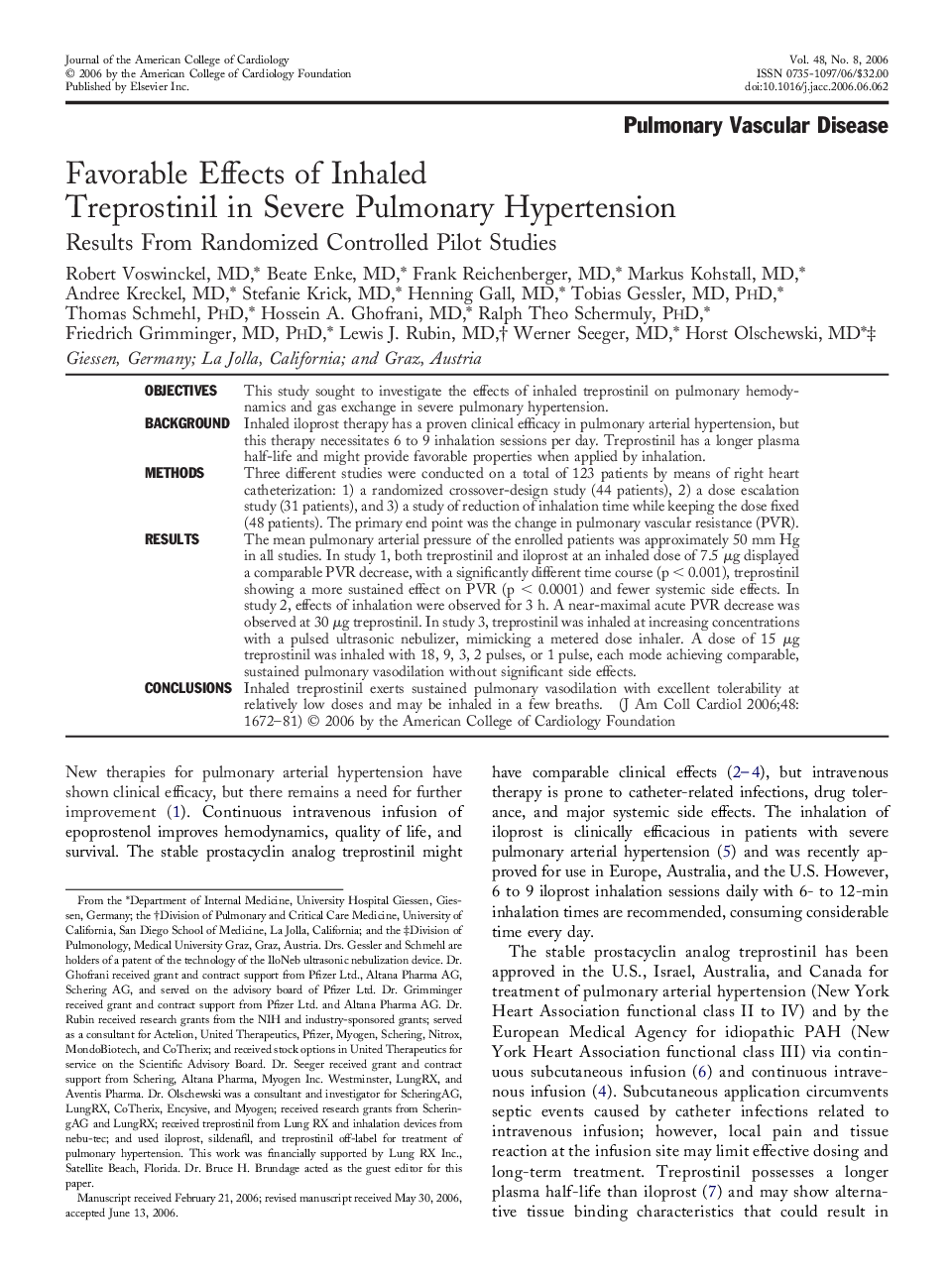| Article ID | Journal | Published Year | Pages | File Type |
|---|---|---|---|---|
| 2953952 | Journal of the American College of Cardiology | 2006 | 10 Pages |
ObjectivesThis study sought to investigate the effects of inhaled treprostinil on pulmonary hemodynamics and gas exchange in severe pulmonary hypertension.BackgroundInhaled iloprost therapy has a proven clinical efficacy in pulmonary arterial hypertension, but this therapy necessitates 6 to 9 inhalation sessions per day. Treprostinil has a longer plasma half-life and might provide favorable properties when applied by inhalation.MethodsThree different studies were conducted on a total of 123 patients by means of right heart catheterization: 1) a randomized crossover-design study (44 patients), 2) a dose escalation study (31 patients), and 3) a study of reduction of inhalation time while keeping the dose fixed (48 patients). The primary end point was the change in pulmonary vascular resistance (PVR).ResultsThe mean pulmonary arterial pressure of the enrolled patients was approximately 50 mm Hg in all studies. In study 1, both treprostinil and iloprost at an inhaled dose of 7.5 μg displayed a comparable PVR decrease, with a significantly different time course (p < 0.001), treprostinil showing a more sustained effect on PVR (p < 0.0001) and fewer systemic side effects. In study 2, effects of inhalation were observed for 3 h. A near-maximal acute PVR decrease was observed at 30 μg treprostinil. In study 3, treprostinil was inhaled at increasing concentrations with a pulsed ultrasonic nebulizer, mimicking a metered dose inhaler. A dose of 15 μg treprostinil was inhaled with 18, 9, 3, 2 pulses, or 1 pulse, each mode achieving comparable, sustained pulmonary vasodilation without significant side effects.ConclusionsInhaled treprostinil exerts sustained pulmonary vasodilation with excellent tolerability at relatively low doses and may be inhaled in a few breaths.
